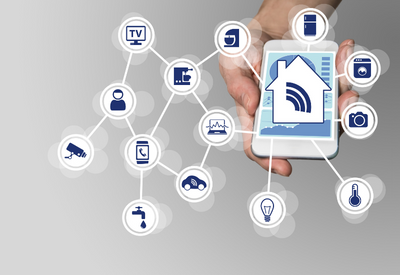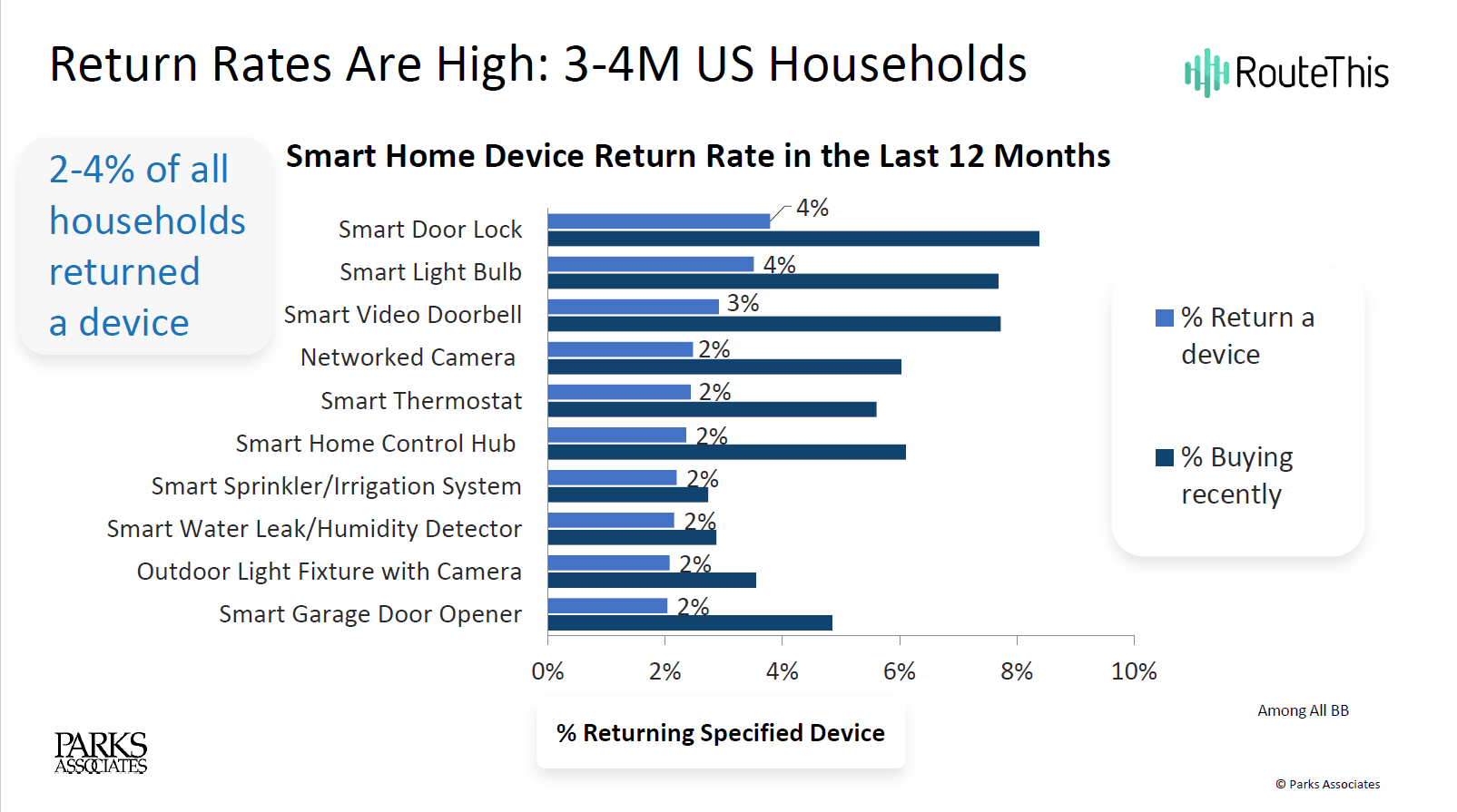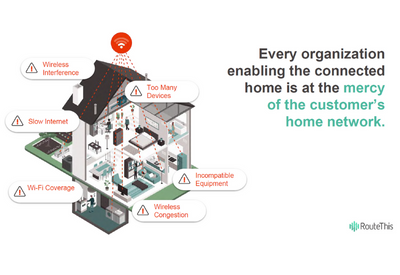Conquering Smart Home Adoption Challenges

 Smart home adoption is on the rise, but there are some deal-breaking caveats hampering a good customer experience.
Smart home adoption is on the rise, but there are some deal-breaking caveats hampering a good customer experience.
Elizabeth Parks of market research firm Parks Associates explored the topic of Building Brand Loyalty Across the Smart Home with experts from smart home companies RouteThis, Abode, and SkyBell.
In a Parks Associates survey of 10,000 households, 37% have at least one smart home device and many intend to purchase additional devices in the near future.
“As consumers add more devices to their homes, they are experiencing more technical problems,” Parks explained. The loss of wireless connectivity tends to be at the top of the list as well as other technical issues impacting the device’s performance, responsiveness, set-up, and battery life. Those difficulties lead to high return rates, which then damage the brand.
While a 2-4% return number may seem small, it represents roughly 3-4 million households, Parks points out, adding that 1 in 4 consumers are returning a smart home device they’ve purchased for reasons such as: defective or broken; didn’t work as advertised; issues configuring the device; difficulty with physical installation; difficulty learning features. “Is this really what’s happening? Or do these products actually work and consumers don’t know how to get that wireless connectivity working or properly set up,” Parks remarked.
Similar problems have occurred in smart lighting adoption. Lighting showrooms have reported high returns for smart light bulbs from consumers claiming that the product didn’t work. This, of course, resulted in a high rate of RGAs for the showrooms as well as damage to the stores’ image and consumer trust.
What’s Going Wrong
Jason Moore, co-founder & CEO of RouteThis, stated, “Wifi connectivity has never been more important than it is now. The home eco system is ultimately highly fragmented and the potential problems are vast. Many [smart home device manufacturers] might think, ‘Well this is a wifi problem, why do I have to deal with it?’ But the reality is that the average consumer is making it the responsibility of the smart home brand. A customer who is running into issues while trying to set up their smart home speaker or doorbell doesn’t think, ‘Oh it must be my wifi that’s the problem.’ Their knee jerk reaction is that the device must be faulty.” Complicating matters is that consumers see their phones are properly connected to wifi without a problem. When they call your customer service, it’s very hard for a service rep to know what is happening since they don’t know the router or how far away it is from the new device, so within 10 minutes the customer is demanding a new product be sent.”
Compounding that dilemma, Moore explained, is that the product was sent to the customer in good shape and in the proper packaging, but it comes back to the manufacturer in worse shape and very often not in the same packaging — plus there are return shipping costs. “Now it has to be sold as refurbished at a discounted price, even though there’s nothing wrong with it. That support call might have cost you anywhere from $5-$20, but once it escalates to a product replacement, now you’re in a totally different ballpark from a cost perspective,” he remarked.

Unfortunately, the customer will get a brand new product and the same thing will happen since the core issue of the problem being the wifi network was never addressed. “If anything, this second product ends up further damaging the relationship with the customer,” Moore commented. “They now think they’ve been sent two defective devices. The call comes to customer service, and they basically just want a refund at this point and the chance of negative reviews goes up, the chance of them logging a complaint against the retailer goes up and so on, which obviously impacts future sales.”
According to Moore, the key takeaway is that the chances of the product being defective is incredibly low, and the majority of the time it can be tracked back to a problem with the wifi network. “In my own company [RouteThis], I came to the conclusion that to effectively solve this problem, you have to solve it at the start of the user journey — ideally in step 1 or 2. Once it’s escalated to a product return, the negative implications are a foregone conclusion. “You have to – very quickly – help your agents or service support discover what the core issue of the wifi problem is so that it can get resolved,” Moore affirmed. [To that end, RouteThis’ software determines why a router is having trouble connecting, keeps buffering or dropping offline. It offers a diagnostic tool in the form of an app for end-users and a laptop version for customer service reps in a call center.
Product returns are a headache even for a B2B product such as SkyBell video doorbells, which are installed by alarm companies and other partner professionals. “We want the customer to have a great experience with our wifi video doorbell and while we have a different experience than (Jason) since we are B2B, the customer still calls into our call center and we help troubleshoot their wifi/router connection,” explained Desiree Mejia, COO of SkyBell. “We’re big proponents of wifi education and helping the consumer realize that it’s not just our product that will benefit from a better wifi experience, but also their other IoT products in the home.”
How Much Education Is Needed?
Can the pervasive connectivity problem be solved by educating the customer? Not exactly. “Wifi is a complicated technology and the average customer’s knowledge of it is very, very low compared to the people who build these products,” Moore recounted. “So what happens in the consumer’s mind is that they try to troubleshoot it themselves. They may see their iPhone is connecting well, but this new product is not. They don’t consider – to take the connected doorbell example – that the doorbell might sit on the outside of the home, far away from their router or wifi connection whereas their iPhone is inside the home on the kitchen counter. They don’t necessarily realize that that difference can make a HUGE difference in connectivity.”
Smart home companies, however, are at a disadvantage. “I think these problems are very difficult to eliminate; there’s not a lot you can do to fix a range issue. If the customer is trying to install a connected camera on their shed in the backyard and there’s no wifi there…the antenna can only get so big to get that coverage,” Moore explained. “When customers do have these issues, I think very pointed education in those moments is important. The pointedness of it is very important because I don’t think customers want to learn everything there is to know about wifi. They just want to know what is the one thing I need to do to fix this problem right now. Is there a setting I can change on my router to fix it? They just want a solution as quickly as you can get it to them. That’s why our view is, the more you can solve [through a self-service tool], the better, but ultimately you need fall-back strategies.
What Can Manufacturers Do?
Christopher Carney, founder & CEO of Abode, a DIY home security company, “From our perspective, we try to do a lot of QA testing on our products ahead of releasing them to try to work on some of these issues with connectivity. We can’t solve all cases because we don’t have 100 routers that we’re testing things on, but we do a bunch of testing to make sure it works. And just like you have been talking about, 90 percent of the time, it’s due to the consumer’s network that we have a support call,” he said. “In general, the customer understands the symptom, but not the root cause. A lot of times it goes back to the router, and they don’t know how to manage the router, or there are firewalls or blocking going on. We even have issues with really smart technical people who are buying our product because we are HomeKit-enabled, and they will say, ‘My HomeKit doesn’t work.’ Again, it really goes back to the product not connecting to our servers because of a wifi problem.”
Planning for every router scenario sounds easier than it is. Moore points to the fragmentation in the networking industry. “There are 8,500 makes/models of routers out there to reach 95 percent of the world’s end-consumer base. There’s nobody out there testing routers on that type of scale,” he said. “So when you think of the challenge that creates, you have to have a plan for the unexpected.”
How Has the Industry Changed?
“Early on in the smart home industry, I think a lot of companies were seeing all these numbers coming back in terms of customers calling in saying the products weren’t working and it was almost a knee-jerk reaction to say, “We’ve got to fix the product,” Moore stated. “I think the industry has matured a little bit now and many companies are getting to the point of realizing that this isn’t really a product problem. While we’re going to do as much testing and battle hard before product goes out the door, at the end of the day these products are going to be in the customers’ homes with the equipment they happen to have and the environments they happen to be in. We’ve gotten to a point where they realize this is going to be a pervasive problem and we’re always going to have to support this.”
And supporting it doesn’t come cheap. Companies need to staff a call center manned by tech-savvy people and there will also be mistakes. “On the business side, there are support costs, the costs of human error on the support interactions, and then ultimately the brand impact that follows,” Moore explained.
“There is so much happening that is out of our control,” Carney added. “You have more complex products entering the field — routers with more bells and whistles and customers who have these more complex controllers, routers with firmware updates that have special security protocols, plus you have ISP providers [to deal with]. We had an issue with Comcast Xfinity, which had a security feature where they would push all the traffic for our Abode customers through their system to a special DNS server that caused all of our gateways to go offline and go to cellular. That was an extra cost to us to support that, too. There are pros and cons to all these different things. I do think that as we get further down the line that these [connectivity issues] will continue to fester until we can make the router space easier for customers. I think that’s the only way through this, where you’ll see this problem being alleviated a little bit.”
SkyBell is especially sensitive to the consumer experience. “On the manufacturing side, we do a lot of rigorous testing at the end point before it goes into the box (check the router, the wifi and the connectivity to make sure nothing is dropping) to avoid ruining the user experience,” Mejia said. “The doorbell is often the entry point of wifi into the home security and IoT market and it is hugely important that the video works consistently.”
One problem she sees is consumers hanging on to outdated technology when it comes to their routers. “It’s amazing how many people have never changed their router. You’ll tell them their router is 10 years old and they’ll say, ‘but that’s what came with the system.’ So I think some of [the solution] is to start working with the cable companies and ISPs and others to start educating their customers on the need to upgrade. Consumers regularly upgrade their iPhones and iPads and all these other devices. I don’t think people realize how many different pieces they have on their network and what that can do to video and home security and other IoT products,” she commented. Up-to-date equipment makes all of the connected devices work better.
“For SkyBell, it’s about making sure the product isn’t defective leaving the factory. We have call center techs, all with a technical background and all are wifi experts. Our average handle time is 8-9 minutes. We have to convince the customer that it’s not our product [that is causing the problem], and you have to do it nicely. We help them to realize the product works and for the user to get the best experience, there are things we can do. We can help you with the bandwidth, etc., and more education on bandwidth versus signal strength. I don’t have an easy solution; it’s a lot of human touch. As the market matures, some of this has to be resolved because it’s expensive for all of us on the [call center] phone. Your brand is so important,” she emphasized. “We will continue to look at ways to educate the customer before they buy, and we provide a lot of FAQs to answer questions beforehand.”
Can Mesh Save the Day?
“Device stacking is happening,” Parks explained. “Consumers might start their smart home journey by buying one doorbell, but then they add door locks, and next they add cameras, and before you know it they’ve built a system instead of buying it all at once. This creates complexity all around.” Will routers that include mesh solve some of these issues?
“I think it would help,” Carney added. “You’d think the latest technology would be better, more updated, and would help from a connectivity at a distance perspective, assuming it’s within range of the mesh pieces. It comes down to being at the mercy of the customer’s knowledge of these products.” For example, maybe there are default settings on the router that are causing a problem and would be an easy fix. Unless information is super-super clear to consumers, there still could be issues.
Smart home technology is developing far more rapidly than adoption, but staying up to date on the latest developments and providing customer education as needed should keep your company on the right path for greater expansion into this blossoming category.









